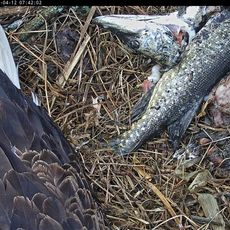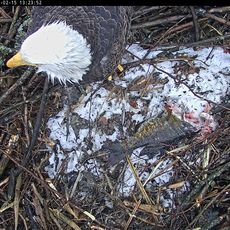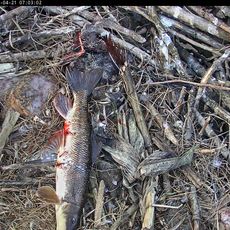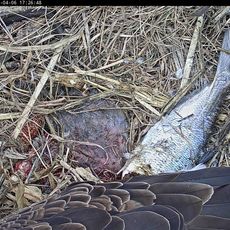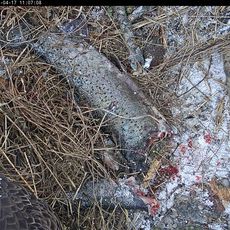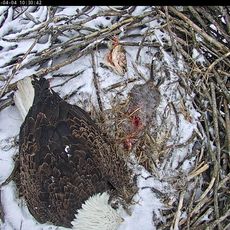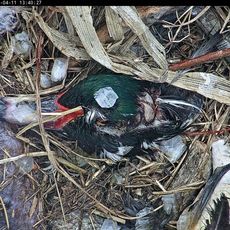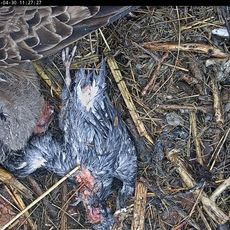Eagle Habitat & Diet
Why do eagles like ND-LEEF
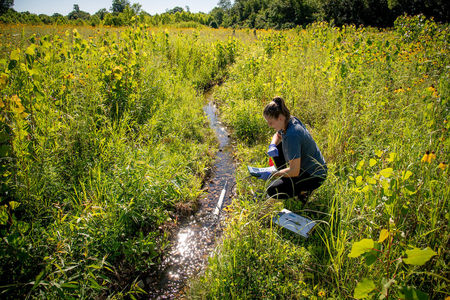
The quiet, natural setting and the proximity to the St. Joseph River are key factors that likely attracted the bald eagles to take over an existing red-tailed hawk nest at ND-LEEF in 2015. Throughout the design and operation of ND-LEEF, users of the facility have sought to have as light of a footprint as possible, and therefore mimic nature. For instance, by covering the site in native prairie, ND-LEEF is not mowed or fertilized and does not have herbicides applied, causing far less human disturbance.
Researchers at ND-LEEF have also taken precautions to limit disruption of the eagles by delaying the start of the summer research season from March to May. The shift in timing helps limit disturbance when the eaglets are young and most vulnerable.
Given the arrival of the bald eagles, ND-LEEF morphed its site map to reposition where two additional watersheds are being placed in order to minimize impact on the nesting pair. The facility adheres to all guidelines provided by U.S. Fish and Wildlife Service regarding activity near an active bald eagle nest.
What do eagles eat
Bald eagles eat a wide range of prey including fish, reptiles, birds, and mammals. The location of the nest at ND-LEEF is unusual in that there is only one nearby body of water, the St. Joseph River. As such, the river is likely the pair’s prime hunting location. Depending on the prey type, eagles typically capture prey with their talons and then clip the spinal cord with their bill.
The adult eagles tear food and feed the eaglets until they have acquired the ability to self-feed. Self-feeding is a milestone that typically begins when the eaglets are around 40 days old.
Adult eagles will often eat the fish head themselves so the eaglets do not get hard pieces of the spine caught in their esophagus. The eagles then feed the eaglets the softer tissues of the fish. After about 40 days, the eaglets are able to peck at food dropped in their nest and self-feed.
Eagle Diet Research
In 2018, researchers programmed the in-nest cam to take five separate still images, capturing all areas of the nest every 20 minutes. This equated to more than 26,000 images secured over the summer. As published in the American Midland Naturalist, the team then combed through the images to identify when and what species of fish and other animals were brought into the nest. Researchers identified 135 prey items and at least 26 prey “taxa” over 75 days. The majority of recorded prey items were fish (73 percent), with redhorse suckers being the most common. Smaller numbers of birds (13 percent), mammals (10 percent) and reptiles (4 percent) were also observed.
The images below depict wildlife in action and may be unsettling to some.
By analyzing both the species and sizes of the eagles’ prey, Notre Dame researchers have gained a better idea of the diversity and availability of food to eagles. This research provides a valuable data set on the ecology of rare bald eagles in northern Indiana, and support the goals of ND-LEEF to serve as a platform for interdisciplinary research and education for the region.
